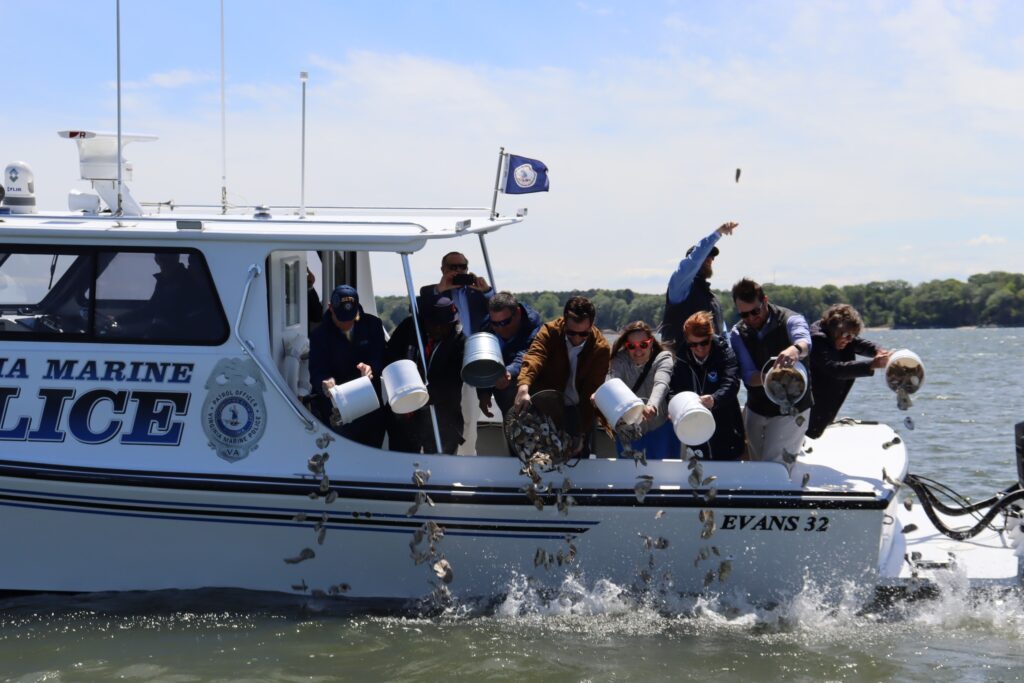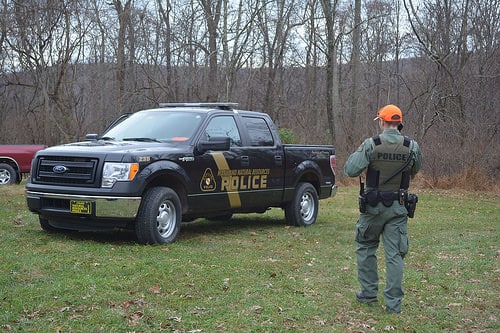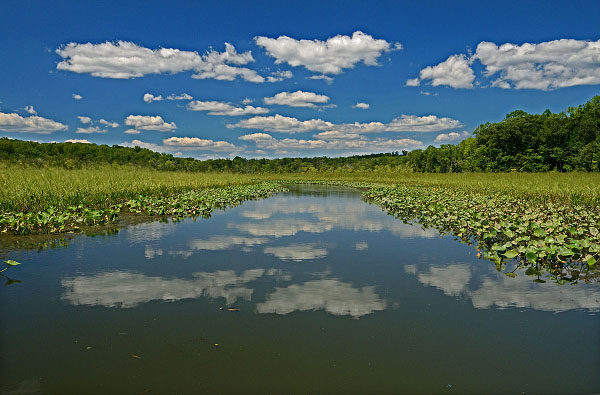The Commonwealth of Virginia chose Earth Day to announce a milestone in its oyster restoration efforts: the Lower York River Oyster Restoration Goal is complete. The oyster habitat has now reached over 200 acres.
The very last oysters destined for the reef were scattered there by boat on Monday, marking the completed restoration of the tributary.
Virginia Governor Glenn Youngkin, Secretary of Natural and Historic Resources Travis Voyles and staff from Virginia Marine Resources Commission, the National Oceanic and Atmospheric Administration (NOAA), and the Virginia Institute of Marine Science (VIMS) joined with the oyster industry for the celebration. State leaders symbolically signed the last oysters before they were added to the reef.
“NOAA is excited to celebrate not only the tremendous work to restore more than 200 acres of oyster reef in the York River—and the habitat these reefs will provide for species including black sea bass, summer flounder, and blue crabs—but also to highlight the partnership among Virginia agencies and NOAA that made it happen,” said Dr. Sunny Snider, deputy director of NOAA Fisheries’ Office of Habitat Conservation.
NOAA is one of the partners in a plan to restore oysters to 10 Chesapeake tributaries by 2025. Started in 2014, the Chesapeake Bay Program plan targeted ten Bay tributaries across Virginia and Maryland in which to restore native oyster habitat and populations. Since then, the two states have been working their way through each large-scale project. Here are the tributaries chosen for restoration.
Maryland:
- Harris Creek
- Little Choptank River
- Tred Avon River
- St. Mary’s River
- Manokin River
Virginia:
- Great Wicomico River
- Lafayette River
- Lower York River
- Lynnhaven River
- Piankatank River
Virginia lays claim to the largest oyster restoration and replenishment effort in the United States. VMRC Commissioner Jamie Green said, “The completion of the largest alternative substrate planting restoration project of the year in the Lower York River demonstrates our commitment to science-based management strategies and public-private partnerships.”
VMRC believes that restoration models like this one can be replicated on a global scale.




